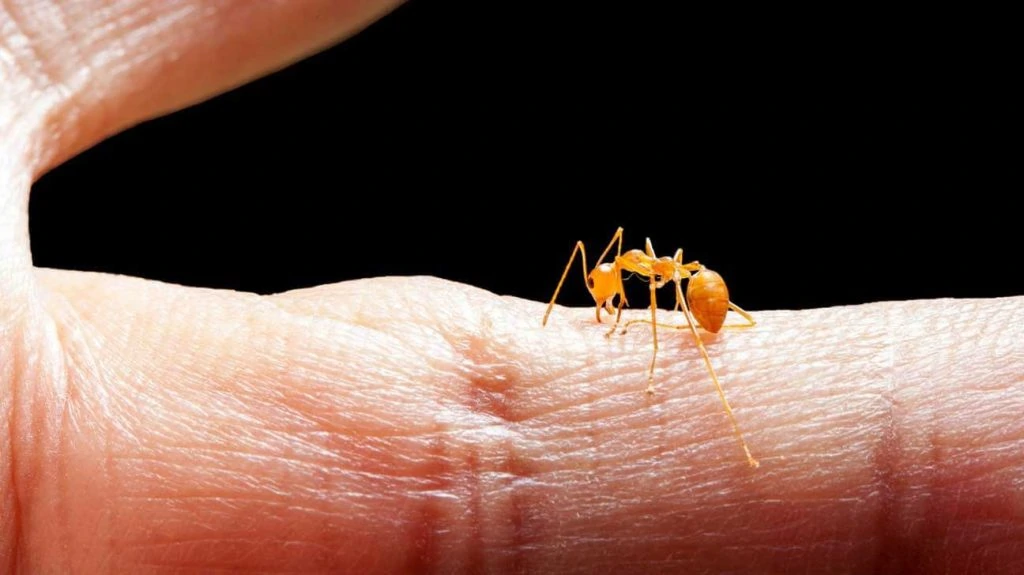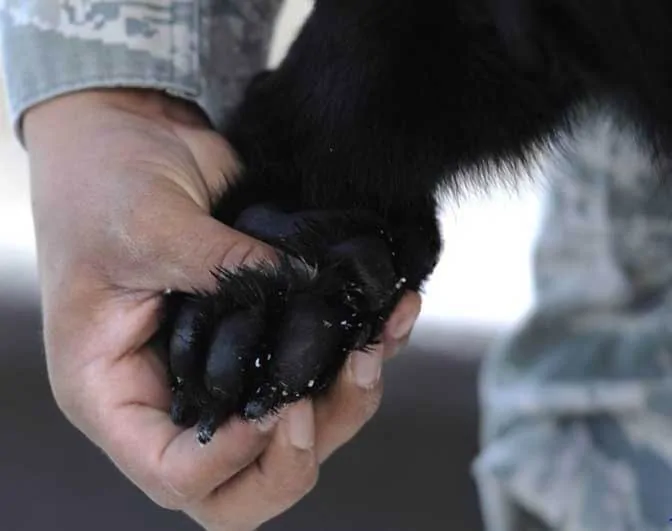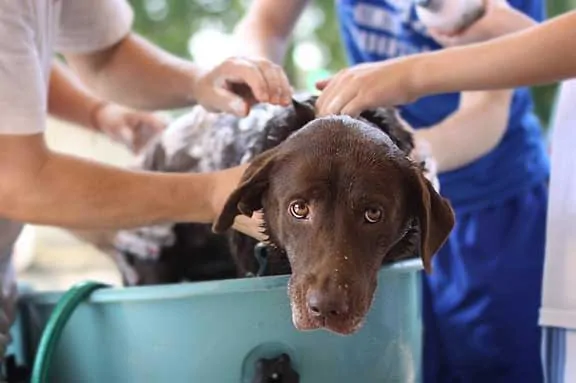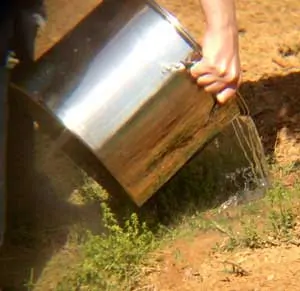Fire Ants and Pets
Jan 30th 2024, by Dan Crosfield
Any links on this page that lead to products on Amazon are affiliate links and we earn a commission if you make a purchase. Thanks in advance for your support! Learn more

Fire ants are nobody’s idea of a good time. If you have an ant colony on your property, you may have noticed the large mounds of soil that these creatures create. And you may have even been on the receiving end of their sting.
Ants are closely related to wasps, and can sting just like their wasp cousins do. Fire ant bites and stings are a painful result of getting too close to fire ant mounds. Like wasps, they have a barb in their abdomen which they will use in defense of the nest. So while people often talk about fire ant bites, with this species, it’s the sting in the tail that you need to worry about.
Fire ant injuries are bad for anyone. And your pets are not immune. These creatures, originally imported from South America to the southeastern United States, usually nest outdoors, where they can easily come into contact with dogs and outdoor cats. However, these insects have also been known to come inside homes when foraging for food. It’s even possible for them to nest inside wall voids, so even indoors, your pet may not be safe.Tip: How to control Fire Ants.

If your pet disturbs a fire ant nest, the fire ants attack. When a fire ant stings, it bites first to anchor itself. Then it curls its abdomen up underneath its body to inject venom and stabs multiple times. While it’s stinging, the ant also releases a defense pheromone which will cause other fire ants to come to its aid. So it’s very common to receive multiple stings at one time from these creatures, especially if you’re close to an ant hill.

Dogs that are prone to digging are especially vulnerable. However, your pet doesn’t have to disturb the nest to get stung. Fire ants love to feed on protein, and pet food can be an excellent source of it. Often, especially if pets are fed outside, the ants will swarm over a food bowl. So when your dog or cat goes to eat, it could get a nasty surprise.
When fire ants attack, they will actively look for areas on your pet’s body that are less protected by fur. So stings to a dog’s muzzle are very common. Paws, snouts and the stomach are also regular targets.
Luckily, an attack from fire ants is very unlikely to be life-threatening. Usually, it’s nothing more than a painful learning experience for your pet. Only in cases of allergic reactions or your pet receiving hundreds of things should you seek immediate veterinary attention.
What to do if Your Pet Gets Bitten by Fire Ants
If your furry friend does have a run-in with fire ants, the quicker you can respond, the better. First, you’ll want to stop any more stings from developing. Next, you’ll want to treat the stings your pet already received. Lastly, you’ll need to monitor the animal to make sure there are no further problems.
Stop the stinging

You could also use a brush or comb to remove the insects before they can do more damage. While it may be tempting, it’s not a good idea to grab the garden hose and hose your dog down. This can often cause the ants to cling on harder and sting more. It’s better to remove them individually than to try and get rid of them all at once. The ants may continue stinging until you’ve removed each one of them.
Remember that the ants struggle to sting through thick fur. So the sting sites will often be on paws, muzzles, and other places where the fur is thinner.
Also, get your animal away from the insects. If it’s close to a mound, you’ll want to get your pet as far away as possible. If the ants have swarmed your pet’s food bowl, you can remove your pet from the area or remove the food bowl – whichever is easier. Remember that ants can sting multiple times, so every insect you prevent from attacking your pet can lead to a lot less pain for the poor animal.
Treat the stings
Once you’ve removed the insects from your cat or dog and made sure no further injuries will develop, you’ll want to treat the injuries the animal already received. Ice on the affected area can help with the swelling caused by the bug’s venom, but good luck getting your pet to go along with that treatment. An easier option might be to give the animal a cool bath to soothe its skin. You can also use oatmeal in this bath, which is proven to reduce the itchiness and burning sensation associated with the venom.

If your pet has received multiple stings and appears to be having a bad reaction, you can give both dogs and cats antihistamine medications intended for humans, such as Benadryl.
But be careful with the dosage. For both dogs and cats, the correct dosage is 1 mg of Benadryl per pound of body weight. But make sure you don’t give this medication to pets with cardiovascular problems or high blood pressure. If in doubt, consult the vet before administering any medication. As painful as these wounds can be, they are unlikely to cause lasting damage, whereas improper use of medication can.
Give your dog a cool bath to soothe its skin
The initial swelling of the sting can quickly fade, but it is often replaced with the formation of a large pimple. The pain and discomfort caused by these pimples can be relieved by various topical creams, but consult a vet before applying any ointment. Some can have negative effects on cats and dogs, especially given the animal’s habit of licking them off and accidentally swallowing them.
Because the wounds often cause itching, you may need to get a collar to prevent your pet from scratching at its bites. Scratching can break the skin and easily cause secondary infection, which can end up being a much bigger problem than the insect stings would normally have been.
Monitor for further symptoms
Just like us, dogs and cats can have allergies to various substances, including the venom of ants. So if your pet has an encounter with these creatures, keep a close eye on it in the hours that follow. If your pet has a severe allergic reaction, symptoms will manifest quickly.
The symptoms of a severe allergic reaction include lethargy, drooling, vomiting, and trouble breathing. The presence of these symptoms indicates that the animal may be going into anaphylactic shock, and this anaphylactic reaction can be life-threatening. If these symptoms do manifest, don’t hesitate to take your pet to an emergency vet. Anaphylaxis can be arrested if treated quickly, but if not, it can most certainly be life-threatening.
Because of this risk, it’s always worth considering comprehensive pet insurance if you live in a place where fire ants are common.
If your dog starts drooling or vomiting, do not hesitate to take your pet to an emergency vet
Fortunately, the vast majority of animals won’t have a reaction as severe. For most pets, the stings of these tiny creatures are nothing more than a painful nuisance.
As the wounds heal, you can help to relieve the intense itching with a paste made from baking soda and water. This will provide some relief without doing any harm to the animal. Alternatively, a 50-50 mix of water and apple cider vinegar can also relieve some of the symptoms of the venom. Keep an eye on your pet’s wounds to make sure that they don’t get infected.
Prevent Your Dog or Cat from Being Stung by Ants
In pest control, as in so many other areas of life, it’s better to prevent the problem from happening in the first place than to try and deal with it once it’s already occurred. Unfortunately, it can be tricky to keep your pets from having encounters with fire ants. Dogs love to explore their environment. And outdoor cats tend to be fascinated by the movement of small creatures. Additionally, the insects are often the cause of the problem, by seeking out and eating the animal’s food.
To prevent your pet from being attacked, try the following:
Use citronella oil
Human bug repellent spray isn’t suitable for use on pets. But citronella oil is a natural pest repellent that you can safely use on your furry companions. Citronella has been used for many years to repel mosquitoes, but it has also been found to have a repellent effect on ants. You can dilute citronella oil with water and spray it on your pet’s coat before it goes outside to help keep bugs away. As always, check with your vet to make sure this is appropriate for your dog.
Keep an eye on your animal
The best way to prevent an issue is to monitor your pet’s outdoor activity and make sure it doesn’t get into trouble. If you have mounds on your property, try to keep your pet away from them. Bear in mind that small mounds are often hard to spot, but can quickly develop into larger nests. New nests can form throughout the summer, so it’s a good idea to monitor the situation regularly. If you do see your dog or cat venturing toward a nest mound, steer it away. It may require some additional training, but animals can be taught to avoid these bugs.
Secure pet food

If you feed your pets outside, this can often cause run-ins with bugs. Fire ants love the high-protein food that we give to our pets, and will often swarm food bowls in large numbers. This creates conflict when the animal goes to feed, causing the insects to feel as though they are being attacked and to sting in defense.
Try moving pet food bowls to areas far away from nests. You can make them inaccessible to the creatures through the use of bug-proof pet bowls. Since ants can’t swim, surrounding pet food with a moat of water or oil can help to keep them away.
- React quickly
No matter what you do, if you have fire ants and cats or dogs on the same property, there’s always a possibility that they will run into one another in the most painful way. If that happens, all you can do is act quickly to alleviate your animal’s pain. Remove the stinging pests, get the pet out of the area, and treat the burning with a cool bath. Antihistamine medication can be helpful, but if you need anything stronger, you’ll need to talk to a vet. And remember to keep an eye on your pet to make sure it doesn’t have a severe allergic reaction.
Get Rid of the Ants
The best long-term solution to protect your pets is to make sure there are no ants on your property. Remove ants from your home, and get rid of ants in your garden. Fire ants can create nests of up to half a million individual insects, and they often change the location of these nests. Also, Fire ants are aggressively territorial. If you do succeed in getting all of this species off your property, you only make it more attractive for more of them to invade. And it doesn’t take much. Nests are started by a single queen who can fly in, often from a long way away.
But that doesn’t mean it’s impossible. There are several powerful ant killers on the market that can help you take care of these pests.
Boiling water

For a fast, easy, affordable, and effective way to deal with a nest, boil some water. Boiling water will kill any ants that come into contact with it. The mounds of soil these creatures create make the colonies relatively easy to spot. Pouring boiling water onto an ant nest can kill 60 to 70% of the ants in the colony, greatly reducing their numbers and the likelihood of any conflicts with pests. But be careful. Boiling water is inherently dangerous, and it doesn’t even need to touch you to scald. Also, the insects will defend their nest. Wear gloves, sturdy shoes, and long pants when performing this treatment to make it harder for the bugs to attack you.
Boiling water is effective at killing ants, but it’s unlikely to eradicate the colony completely. When a nest is attacked, the queen will dig deeper into the soil while the rest of the workers defend her and the juveniles. Also, some nests, such as those of the red imported fire ant, have multiple queens. You’re probably not going to kill these queens by pouring boiling water onto the soil. But you will reduce the size of the colony without having to use toxic chemicals.
Pesticide spray
If you can get hold of it, there’s no better ant killer on the market than Talstar. This concentrated pesticide needs to be heavily diluted with water before use and will require some specialized equipment such as a pump or backpack sprayer. But it’s well worth the trouble it takes to use it properly. Talstar kills ants on contact and also provides residual protection. You can apply it directly to mounds, or else spray around the perimeter of your home to provide a barrier that will kill any ants that cross it for months after the application.
Talstar is designed for use by professionals, and as a result, it can be hard to source. If you can’t get a hold of it, try Ortho Orthene instead. This powder product is applied directly to the mounds, and the ants bring it into the colony with them as they come into contact with it. It’s an effective pesticide that is easier to get hold of than Talstar, and it’s much easier to use. All you need to do is dump a tablespoon of the product on top of the nest and let it do its work. However, Orthene is notorious for having a foul smell. If you have a lot of colonies to treat, this could become an issue that interferes with your enjoyment of your yard. On the other hand, the foul smell might actually help to keep your dogs away from the mounds, so it could be a hidden bonus for you.
No matter which product you choose, it’s a good idea to follow-up any treatment with Ortho broadcast granules. This pesticide provides great long-term fire ant control, and can even prevent the formation of new nests for months after treatment. That way, you and your dogs and cats can enjoy the yard through the summer without having to worry about the venom of these pesky little creatures.
